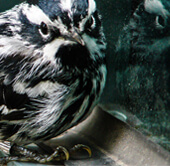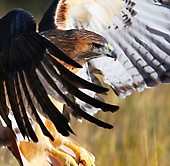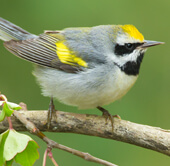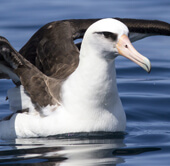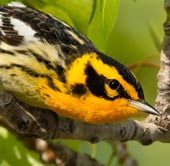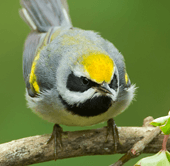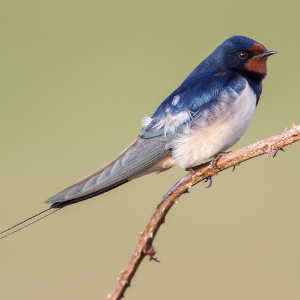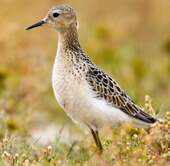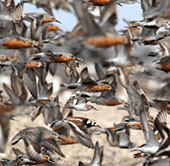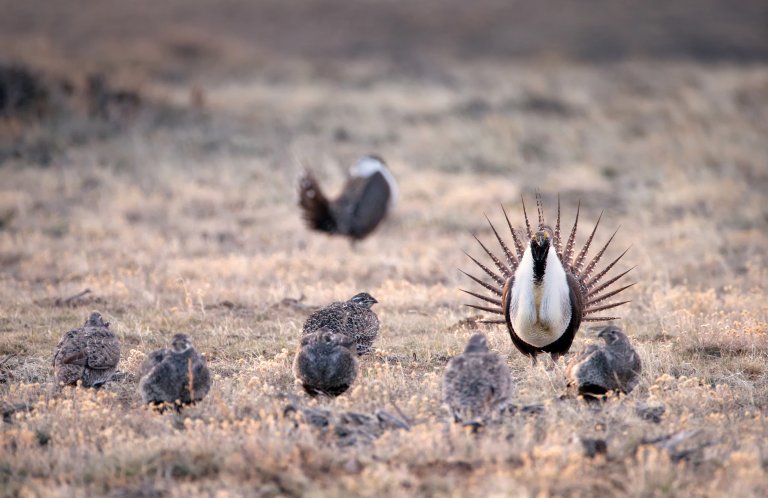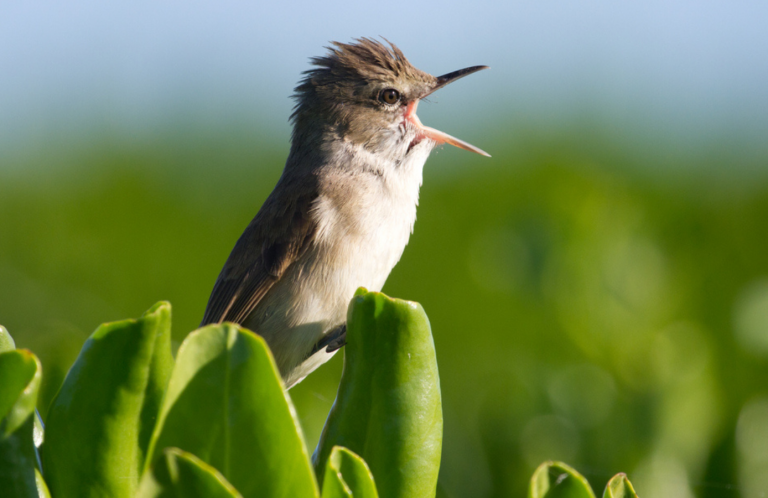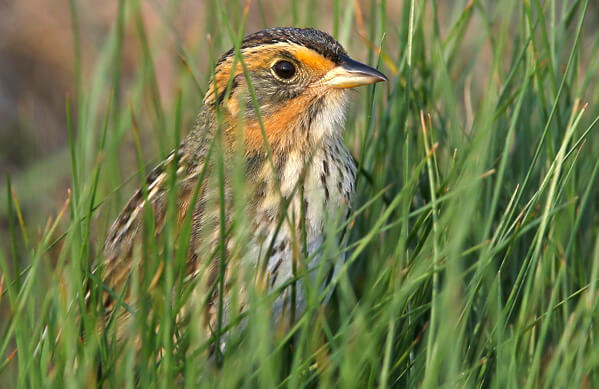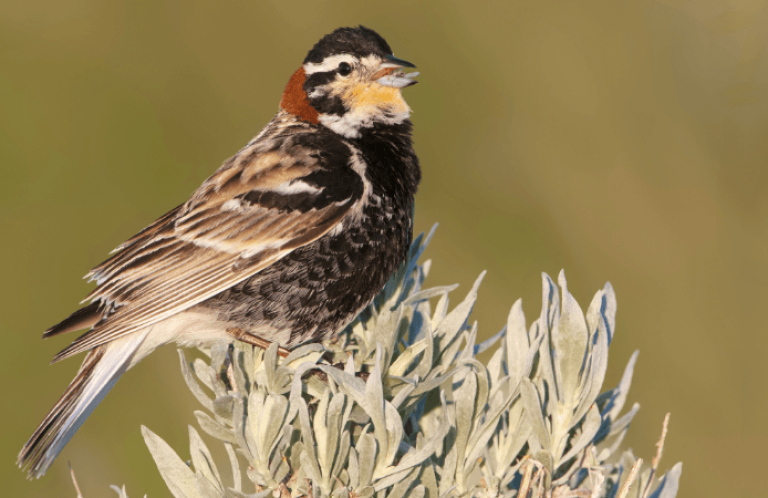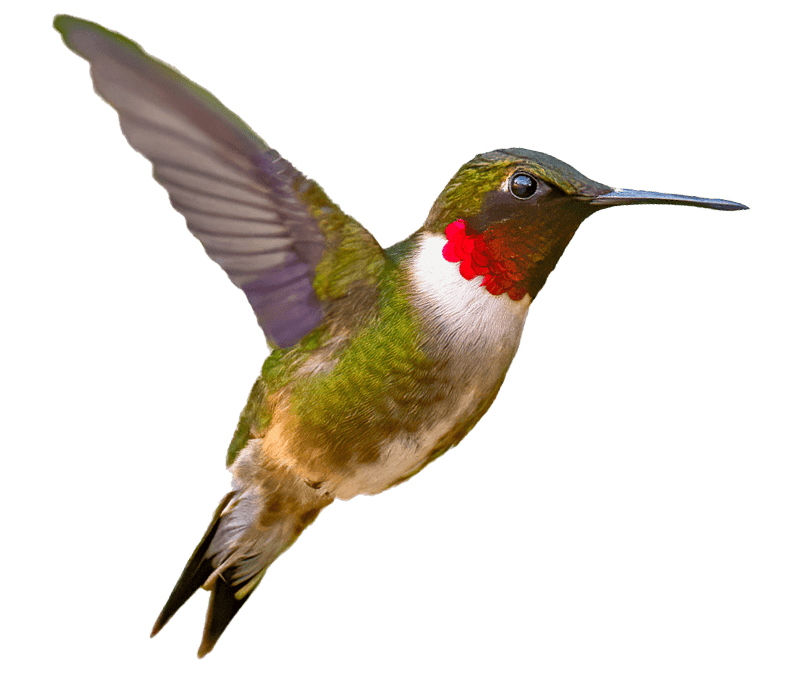Attacks on the Endangered Species Act in Congress Put Imperiled Species in Jeopardy
The Lesser Prairie-Chicken is the focus of new bills in the U.S. House of Representatives and Senate, with some legislators seeking to permanently remove the species from the Endangered Species Act (ESA). If successful, this effort will likely be catastrophic for the beleaguered bird.
While listing a species under the ESA is always a last resort — and our goal should be to keep species off the list in the first place — it's also a critical lifeline to prevent extinction. That is certainly the case for the Lesser Prairie-Chicken. It's lost nearly 90 percent of its historic range and a whopping 99 percent of historic populations. Delisting the species will enable special interests to pursue development projects in prairie-chicken habitat unimpeded by the law.
This is about more than just this iconic species; it is about keeping our bedrock wildlife protection laws intact. Scientists and the guardrails set forth in the act should determine which species are listed, not politics.
The challenges ahead for the Lesser Prairie-Chicken are spelled out in two introduced bills, Senate Bill 171 and House Resolution 571. This legislation would “remove the [L]esser [P]rairie-[C]hicken from the lists of threatened species and endangered species published pursuant to the Endangered Species Act of 1973” and “exclude the [Lesser Prairie-Chicken] from the authority of that Act.”
Troubled Past, Grim Future
After first being proposed for listing in 1994, the decision of whether or not to list the Lesser Prairie-Chicken under the Endangered Species Act was delayed for nearly three decades until 2022.
The Lesser Prairie-Chicken — now reduced to isolated populations in Colorado, Kansas, New Mexico, Oklahoma, and Texas — was listed in two separate distinct population segments (DPS): the Northern and Southern. This approach effectively allowed each population to have its own special needs considered. The Northern DPS was listed as Threatened; this population has a wider range, greater genetic diversity, and more connected habitat than its southern neighbors. With less diversity, less habitat, and fewer overall members, the Southern population was listed as Endangered. U.S. Fish and Wildlife Service (USFWS), tasked with charting the course for the bird's future, made no qualms about what the Southern DPS is facing: “Because the Southern DPS is currently at risk of extinction, we are listing it as endangered.”
What followed the long-awaited listing of the Lesser Prairie-Chicken was a series of creative attacks deployed to oppose the bird's status. These efforts to undermine its protections are rooted in concerns over the habitat needed to sustain the species — habitat that is sought for unsustainable land use for agriculture and resource extraction. It's not only the Lesser Prairie-Chicken that will suffer if these attempts are successful. They could also lead to the unraveling of the Endangered Species Act itself.
Last year, a little-used measure called the Congressional Review Act was employed to try and reverse the 2022 decision to list the bird; only a presidential veto kept their protections intact. This was the first time in United States history that an act of Congress was employed to try to reverse an ESA listing. Similar efforts were made with amendments to spending bills and other major pieces of legislation.
Voluntary Efforts Have Not Been Not Enough
For decades before the decision to list the Lesser Prairie-Chicken was made, federal programs incentivized resting pastures and restoring agricultural lands to prairie, all in the hopes of recovering the species, which has declined sharply as its habitat has been lost and fragmented. American Bird Conservancy (ABC) itself has worked with a fantastic network of conservation-conscious landowners who have voluntarily set aside some of their lands as habitat for prairie-chickens and other species. Unfortunately, these efforts alone were not sufficient to reverse the decline.
Species conservation takes creative solutions and authentic partnerships. We are proud to work not only with private landowners, but with state agencies, agricultural operations, and dozens of congressional offices across party lines to do what is best for birds. In fact, a critical part of our work is to keep birds with declining populations like the Golden-winged Warbler off the list. But, we know that when a species' chance of extinction reaches a critical tipping point, it takes the federal backstop of the ESA to make sure it does not reach the point of no return. The ESA has an incredible success rate — 99 percent of all species listed have dodged extinction, and many recover thanks to conservation efforts. Species are downlisted or delisted every year.
Stated another way, nonlisted species rely on voluntary efforts and, if they are lucky, state-level protections. For species in severe decline, this approach is typically not enough to prevent extinction. When a species is ESA-listed, a range of restoration, protections, funding opportunities, and coordinated networks kick in. Potential harms from new projects or actions are identified earlier and mitigated. A nonlisted species in steep decline has little hope; a listed species in decline is supported by resources, expertise, and the assurance that it has a 99 percent chance of not going extinct. Plus hope.
What is ABC Doing, and How Can You Help?
The Lesser Prairie-Chicken, a charismatic, colorful icon of the American West, deserves a chance at recovery. Because of its nature of occupying large, mostly intact grassland landscapes, Lesser Prairie-Chickens are a harbinger of the conjoined fates of many other declining grassland bird species. If we can't bring back the prairie-chicken, we will lose countless other species from the same problems — that is, the loss, degradation, and fragmentation of our grasslands.
ABC will continue to expand on-the-ground habitat conservation programs through our regional teams. And, in the policy arena, we are working to implement measures to conserve habitat, reduce threats, and incentivize grazing rest in the upcoming Farm Bill. We will keep working with partners in the Great Plains and Southwest to understand bird populations and how we can make working lands function for people and wildlife.
But more urgently, we have to stop these bills from passage and keep the Lesser Prairie-Chicken listed under the ESA. To do that, Congress needs to hear from you. North America has lost 3 billion birds since 1970; without standing up for those most in need, we risk far more than just the Lesser Prairie-Chicken.




